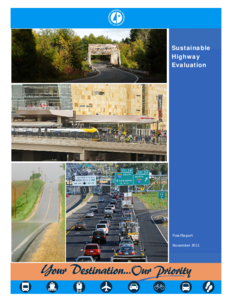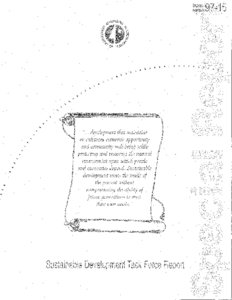Bio-Material Maintenance Treatments
Creator
Date Created
2023-09
Report Number
NRRA202306
Description
Transportation Options and VMT Reduction Field Scan
Date Created
2023-07
Report Number
TRS 2305
Description
Sustainable Development Task Force Report
Date Created
1997-06
Report Number
97-15
Description
Measuring Our Path to the Future: Using Indicators of Sustainable Development in Transportation Planning
Creator
Date Created
2000
Report Number
2005-17B
Description









